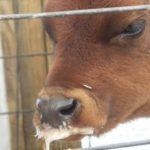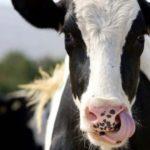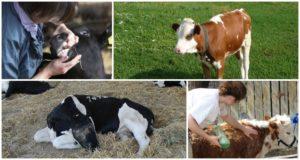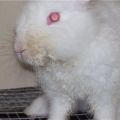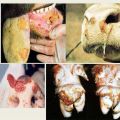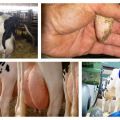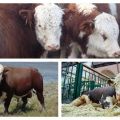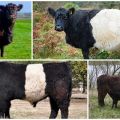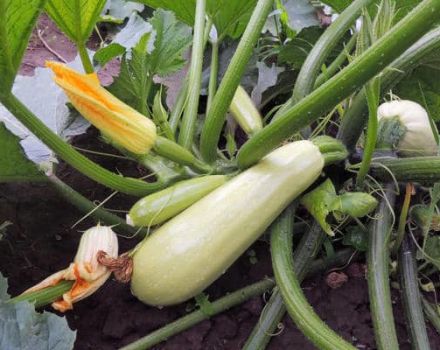Signs and causes of stomatitis in a cow, cattle treatment and prevention
Inflammatory processes on the mucous membrane of the oral cavity of cattle, especially in advanced form, adversely affect the development and productivity of animals, often becoming a problem for farmers. To avoid complications, it is necessary to promptly respond to the first signs and characteristic symptoms of stomatitis in a cow, exclude the presence of dangerous infections and immediately begin treatment.
Causes of stomatitis in cows
Stomatitis in cattle occurs under the influence of various factors, ranging from mechanical damage to severe infectious diseases, one of the signs of which is inflammation of the oral mucosa.
Stomatitis in cows occurs for the following reasons:
- an abundance of roughage (poor-quality hay from sedge or weeds, waste remnants of ears of cereal plants);
- damage to the oral mucosa by foreign objects;
- eating plants containing poisonous, irritating compounds (buttercup, spurge, fern, mustard);
- ingestion of pesticides, some medicinal substances into the oral cavity;
- consumption of spoiled feed, seeded with fungal spores;
- exposure to thermal factors;
- the presence of sluggish chronic infections and functional disorders of the gastrointestinal tract;
- hypovitaminosis.
Stomatitis in cattle can be a sign of foot and mouth disease, paratyphoid fever, hepatitis. In order to correctly solve the problem, it is necessary to assess the symptoms and the presence of accompanying factors.

Signs and symptoms
The first signs of stomatitis in cows, characteristic of all forms of the disease, are impaired chewing function and changes in eating behavior. The animal chews sluggishly, carefully, interrupting and choosing soft food. Often comes up to water. The cow chomps, shakes and rubs its head on the forelimbs. Salivation increases. Saliva foams and flows out in portions.
When examining the oral cavity at the initial stage, swelling and redness of the mucous membrane are visible. Then blistering rashes form on the gums, the inner surface of the cheeks, and the tongue. The formation of ulcerated, erosive foci is possible. Bad breath appears, the tongue becomes covered with a gray coating.
Stomatitis caused by mechanical, thermal or chemical factors usually occurs in cattle without an increase in body temperature and symptoms of intoxication. Other concomitant symptoms, fever, vomiting, diarrhea are signs of infectious diseases that result in stomatitis.
Diagnostics
Diagnostics begins with visual control. The animal's oral cavity is examined, body temperature is measured, and the presence and severity of other symptoms is assessed. If you suspect the infectious nature of stomatitis, as well as severe forms of the disease, laboratory tests are performed.
How to treat a disease in cattle?
Before starting drug treatment, it is necessary to eliminate the cause of the inflammation. Rough food should be excluded from the cow's diet, and the quality of feed should be monitored. Hay is replaced with soft grass or treated with boiling water and cooled dry grass. The diet includes silage, boiled vegetables, talkers.
To avoid irritation of the inflamed mucous membrane, you need to control the temperature of the food, which should not be hot.
It is important to provide the animal with constant access to clean water. It is allowed to add a small amount of acetic or hydrochloric acid to the water. Careful attention should be paid to regular cow oral hygiene. To rinse the oral cavity use:
- clean water;
- 0.5% hydrochloric acid solution;
- 2% sodium chloride solution;
- 3% baking soda solution.

Catarrhal stomatitis requires antiseptic treatment after each feeding (up to 4 times a day). The oral cavity is irrigated with the following aqueous dilutions:
- slightly pink solution of potassium permanganate;
- 1% boric acid solution;
- furacilin solution (1: 5000);
- 1-3% hydrogen peroxide solution.
The presence of ulcers requires additional treatment with Lugol's solution in glycerin or glycerin-based tannin. Stomatitis of an infectious nature requires local and systemic treatment. The oral cavity is treated three times a day with 0.15% Trypanflavin solution or 1% copper sulfate solution. Systemic drugs are prescribed depending on the manifestations of the primary disease.
Prevention of stomatitis
For the prevention of stomatitis in cows, it is necessary to monitor the conditions of keeping animals and the quality of feed. It is recommended to pre-treat coarse hay with boiling water, cool it and only then offer it to livestock.
You should regularly examine cows, monitor health indicators, and promptly vaccinate against common infections. At the first signs of malaise, you need to take timely measures to prevent the development of complications and the transition of the disease into a chronic form.
